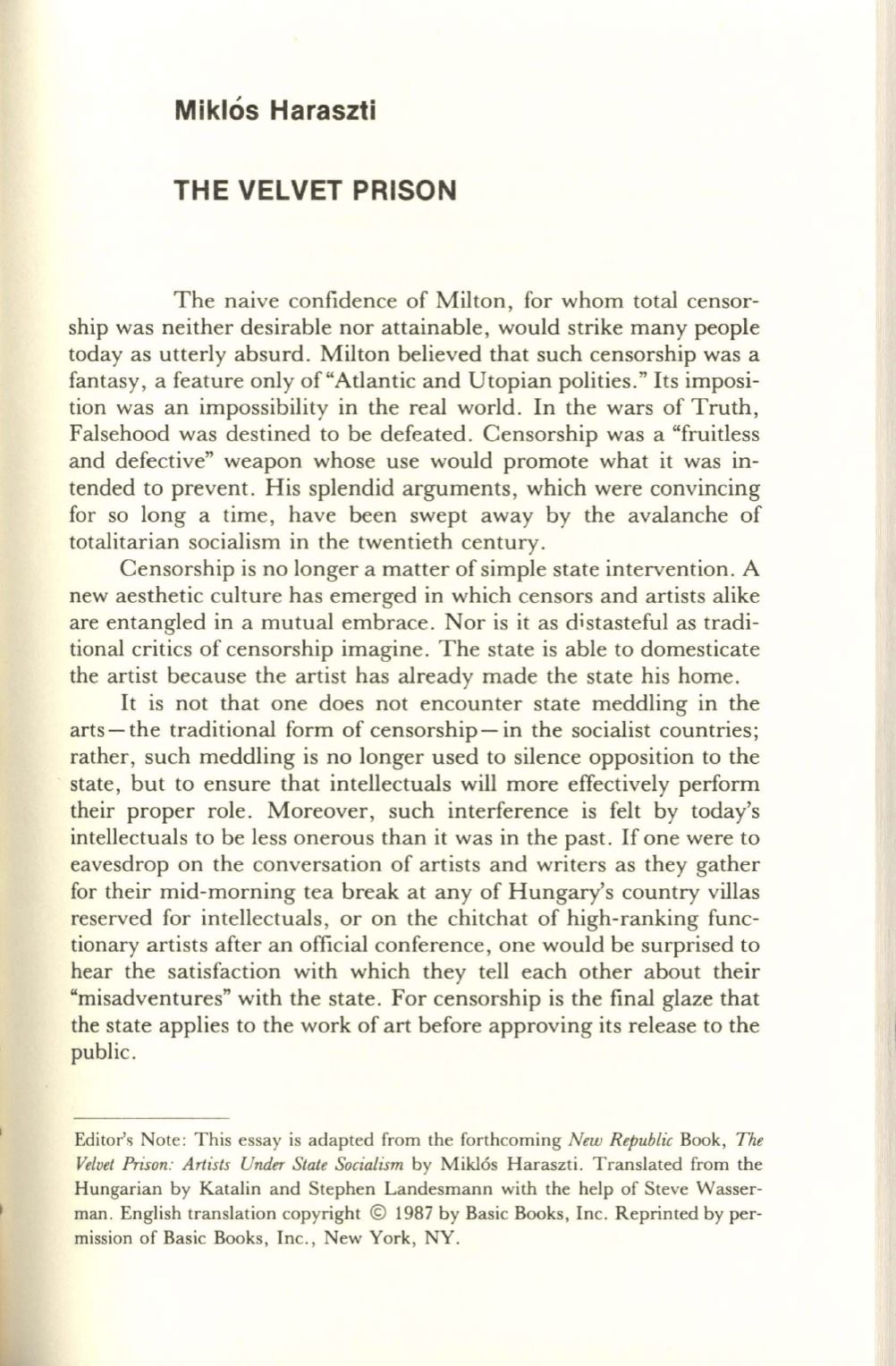
Miklos Haraszti
THE VELVET PRISON
The naive confidence of Milton, for whom total censor–
ship was neither desirable nor attainable, would strike many people
today as utterly absurd. Milton believed that such censorship was a
fantasy, a feature only of "Atlantic and Utopian polities." Its imposi–
tion was an impossibility in the real world. In the wars of Truth,
Falsehood was destined to be defeated. Censorship was a "fruitless
and defective" weapon whose use would promote what it was in–
tended to prevent. His splendid arguments, which were convincing
for so long a time, have been swept away by the avalanche of
totalitarian socialism in the twentieth century.
Censorship is no longer a matter of simple state intervention. A
new aesthetic culture has emerged in which censors and artists alike
are entangled in a mutual embrace. Nor is it as distasteful as tradi–
tional critics of censorship imagine. The state is able to domesticate
the artist because the artist has already made the state his home.
It is not that one does not encounter state meddling in the
arts - the traditional form of censorship - in the socialist countries;
rather, such meddling is no longer used to silence opposition to the
state, but to ensure that intellectuals will more effectively perform
their proper role. Moreover, such interference is felt by today's
intellectuals to be less onerous than it was in the past.
If
one were to
eavesdrop on the conversation of artists and writers as they gather
for their mid-morning tea break at any of Hungary's country villas
reserved for intellectuals, or on the chitchat of high-ranking func–
tionary artists after an official conference, one would be surprised to
hear the satisfaction with which they tell each other about their
"misadventures" with the state. For censorship is the final glaze that
the state applies to the work of art before approving its release to the
public.
Editor's Note: This essay is adapted from the forthcoming
New Republic
Book,
The
Velvet Prison: Artists Under State Socialism
by Mikl6s Haraszti. Translated from the
Hungarian by Katalin and Stephen Landesmann with the help of Steve Wasser–
man . English translation copyright
©
1987 by Basic Books, Inc. Reprinted by per–
mission of Basic Books, Inc., New York, NY.


